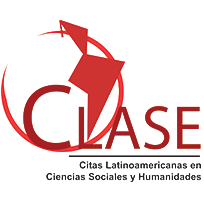Cartografía de las prácticas mediáticas de niños y jóvenes en Portugal
DOI:
https://doi.org/10.32870/cys.v2024.8809Palabras clave:
Niños, Jóvenes, Usos mediáticos, Repertorios mediáticos, PortugalResumen
Este artículo explora los repertorios mediáticos de niños y jóvenes de entre 11 y 19 años que viven en Portugal. A partir de 1 131 respuestas a un cuestionario en línea, busca comprender la totalidad de sus usos de los medios de comunicación y cómo combinan diferentes medios en su vida cotidiana. Entre las variables se incluyen la edad, el año de escolaridad y el sexo. Una de las principales conclusiones de esta investigación es que, aunque los estudiantes de la muestra tienen una amplia gama de medios en sus repertorios mediáticos, utilizan sobre todo teléfonos móviles e Internet. Las dos finalidades principales de su consumo mediático son el entretenimiento y la comunicación.Descargas
Citas
European Union. (2023, 24 de marzo). COMMISSION DELEGATED REGULATION (EU) 2023/674 of 26 December 2022 amending the Annexes to Regulation (EC) No 1059/2003 of the European Parliament and of the Council on the establishment of a common classification of territorial units for statistics (NUTS). Official Journal of the European Union. https://eur-lex.europa.eu/eli/reg_del/2023/674/oj
Floridi, L. (2015). Introduction. En L. Floridi (Ed.), The onlife manifesto: Being human in a hyperconnected era (pp. 1-3). Springer. https://doi.org/10.1007/978-3-319-04093-6
Hasebrink, U. & Domeyer, H. (2012). Media repertoires as patterns of behaviour and as meaningful practices: A multimethod approach to media use in converging media environments. Participations. Journal of Audience and Reception Studies, 9(2), 757-779. https://www.participations.org/09-02-41-hasebrink.pdf
Hasebrink, U. & Paus-Hasebrink, I. (2022). Long-term trends in children’s consumption of media. En D. Lemish (Ed.), The Routledge International Handbook of Children, Adolescents, and Media (pp. 41-48). Routledge.
Hasebrink, U. & Popp, J. (2006). Media repertoires as a result of selective media use. A conceptual approach to the analysis of patterns of exposure. Communications, 31, 369-387. https://doi.org/10.1515/COMMUN.2006.023
Heeter, C. (1985). Program selection with abundance of choice: A process model. Human Communication Research, 12(1), 126-152. https://doi.org/10.1111/j.1468-2958.1985.tb00070.x
Jenkins, H. (2004). The cultural logic of media convergence. International Journal of Cultural Studies, 7(1), 33-43. https://doi.org/10.1177/1367877904040603
Jenkins, H. (2006). Convergence culture: Where old and new media collide. New York University Press.
Kim, S. J. (2016). A repertoire approach to cross-platform media use behavior. New Media & Society, 18(3), 353-372. https://doi.org/10.1177/1461444814543162
Livingstone, S. (2022). Children’s internet culture. En D. Lemish (Ed.), The Routledge International Handbook of Children, Adolescents, and Media (pp. 110-118). Routledge.
McLuhan, M. (1964). Understanding media: The extensions of man. McGraw-Hill.
McLuhan, M. (2009). Compreender-me: Conferências e entrevistas [Understanding me: Lectures and interviews]. Relógio d’Água.
Nystrom, C. (1973). Towards a science of media ecology: The formulation of integrated conceptual paradigms for the study of human communication systems [Tesis doctoral, New York University]. ProQuest Dissertations & Theses Global.
Postman, N. (1970). The reformed English curriculum. En A. C. Eurich (Eds.), High school 1980: The shape of the future in American secondary education (pp. 160-169). Pitman Publishing.
Reagan, J. (1996). The “repertoire” of information sources. Journal of Broadcasting & Electronic Media, 40(1), 112-121. https://doi.org/10.1080/08838159609364336
Scolari, C. A. (2015). Introducción. Ecología de los medios: De la metáfora a la teoría (y más allá) [Introduction. Media ecology: From metaphor to theory (and beyond)]. En C. A. Scolari (Ed.), Ecología de los medios: Entornos, evoluciones e interpretaciones (pp. 15-42). Editorial Gedisa.
Silva, M. T. D., Figueiras, R., Brites, M. J., Amaral, I., Marôpo, L., Santos, S. C., Jerónimo, P., Santo, P. E. & Pacheco, L. (2017). Audiências e cross-media: Estudo de padrões de consumo de notícias em Portugal [Audiences and cross-media: study of news consumption patterns in Portugal]. Estudos em Comunicacão, 25, 177-199. https://doi.org/10.20287/ec.n25.v1.a11
Smahel, D., Machackova, H., Mascheroni, G., Dedkova, L., Staksrud, E., Ólafsson, K., Livingstone, S. & Hasebrink, U. (2020). EU Kids Online 2020: Survey results from 19 countries. EU Kids Online. https://doi.org/10.21953/lse.47fdeqj01ofo
Strate, L. (2004). A media ecology review. Communication Research Trends, 23(2), 1-48. http://cscc.scu.edu
Strate, L. (2008). Studying media as media: McLuhan and the media ecology approach. MediaTropes, 1, 127-142. https://mediatropes.com/index.php/Mediatropes/article/view/3344
Schwarzenegger, C. (2020). Personal epistemologies of the media: Selective criticality, pragmatic trust, and competence-confidence in navigating media repertoires in the digital age. New Media & Society, 22(2), 361-377. https://doi.org/10.1177/14614448198569
Taneja, H., Webster, J. G., Malthouse, E. C. & Ksiazek, T. B. (2012). Media consumption across platforms: Identifying user-defined repertoires. New Media & Society, 14(6), 951-968. https://doi.org/10.1177/1461444811436146
Yuan, E. J. & Webster, J. G. (2006). Channel repertoires: Using peoplemeter data in Beijing. Journal of Broadcasting & Electronic Media, 50(3), 524-536. https://doi.org/10.1207/s15506878jobem5003_10
Descargas
Publicado
Cómo citar
Número
Sección
Licencia

Esta obra está bajo una licencia internacional Creative Commons Atribución-NoComercial 4.0.
Los autores/as que publiquen en esta revista aceptan las siguientes condiciones:
De acuerdo con la legislación de derechos de autor, los autores conservan los derechos de autoría y otorgan a Comunicación y Sociedad el derecho de primera comunicación pública de la obra. Comunicación y Sociedad no realiza cargos a los autores por enviar y procesar artículos para su publicación.
Los autores/as pueden realizar otros acuerdos contractuales independientes y adicionales para la distribución no exclusiva de la versión del artículo publicado en Comunicación y Sociedad (por ejemplo incluirlo en un repositorio institucional o publicarlo en un libro) siempre que indiquen claramente que el trabajo se publicó por primera vez en Comunicación y Sociedad.











